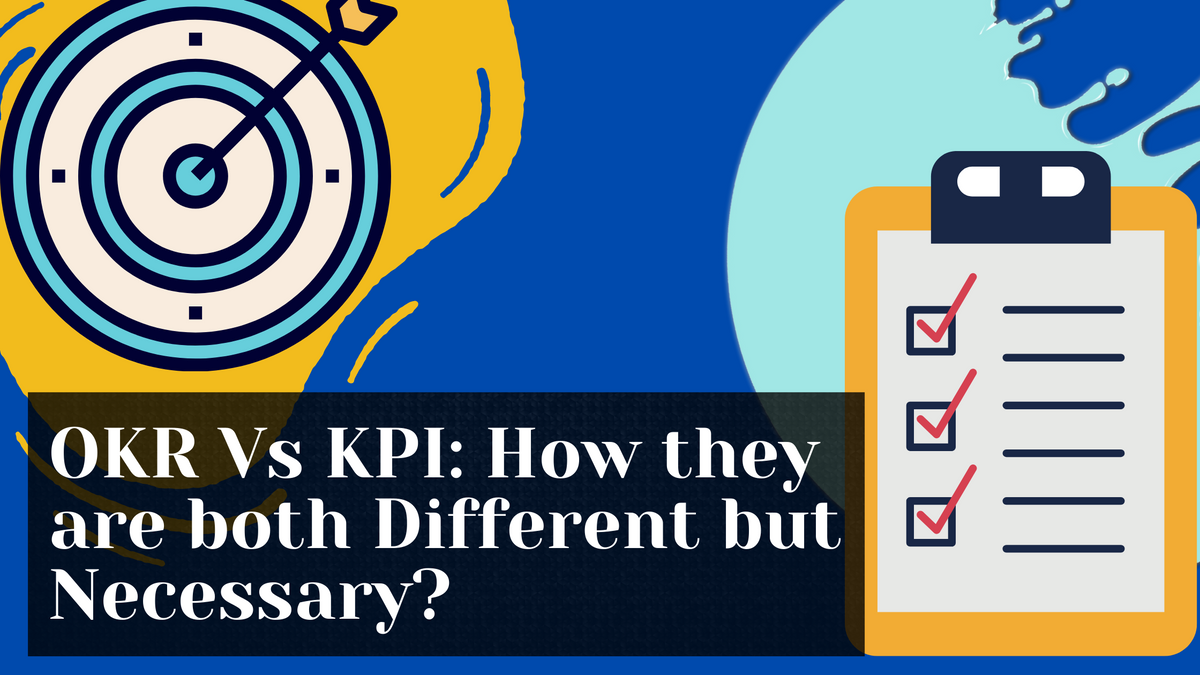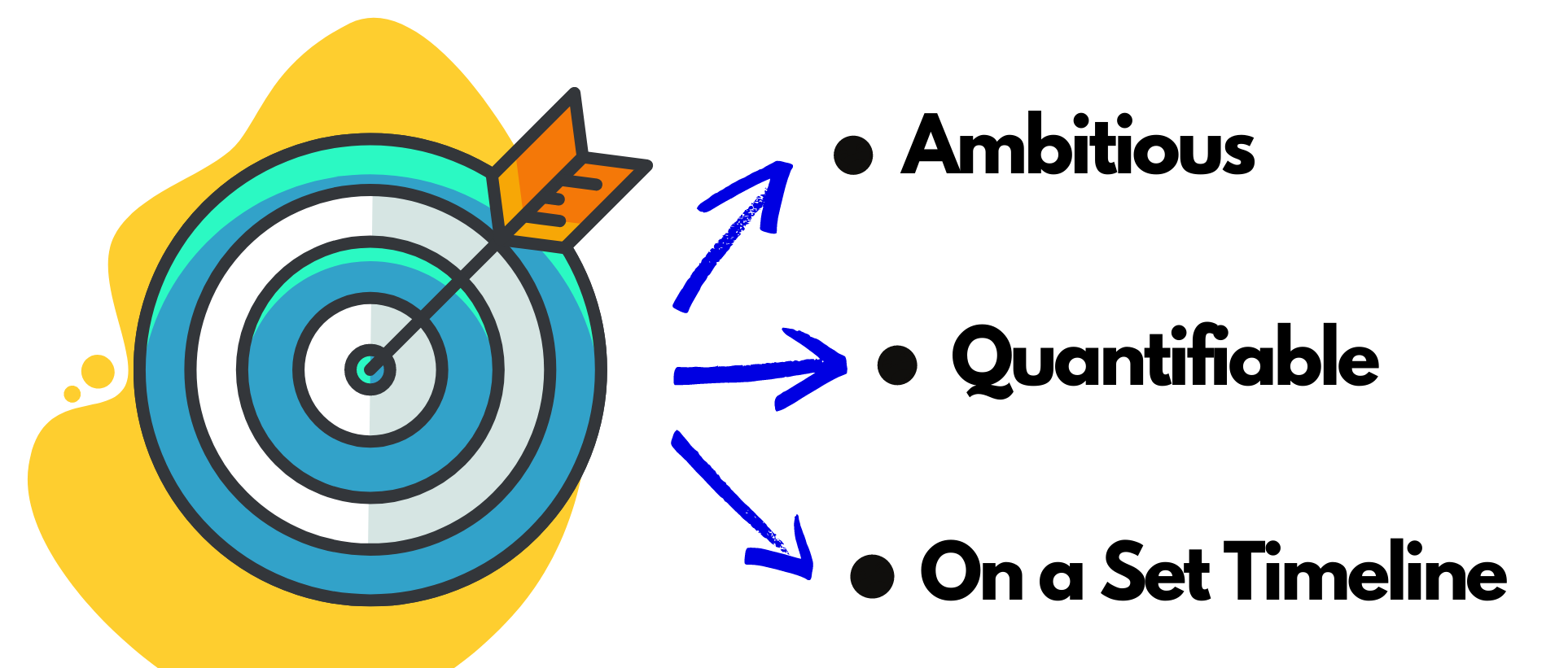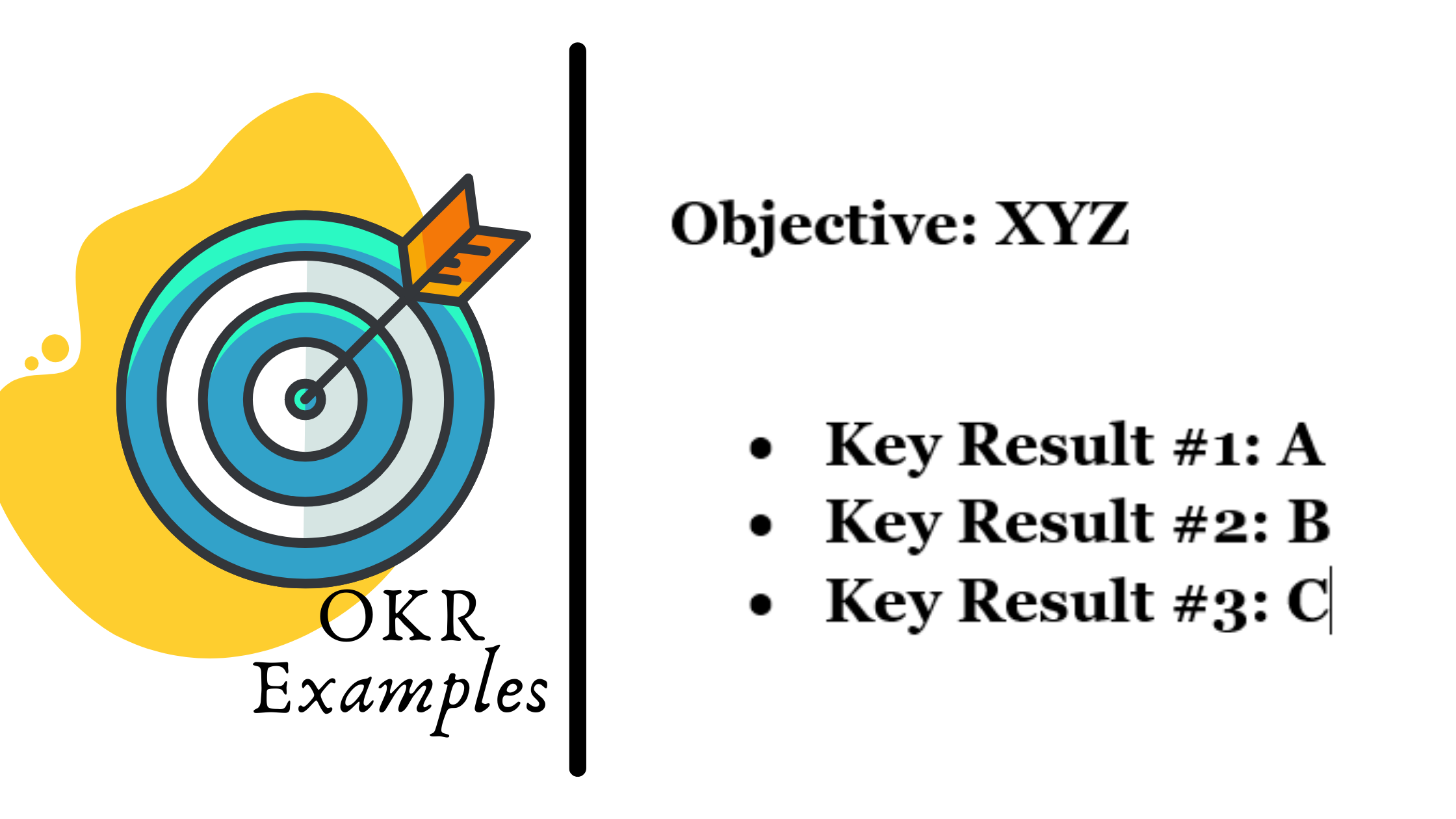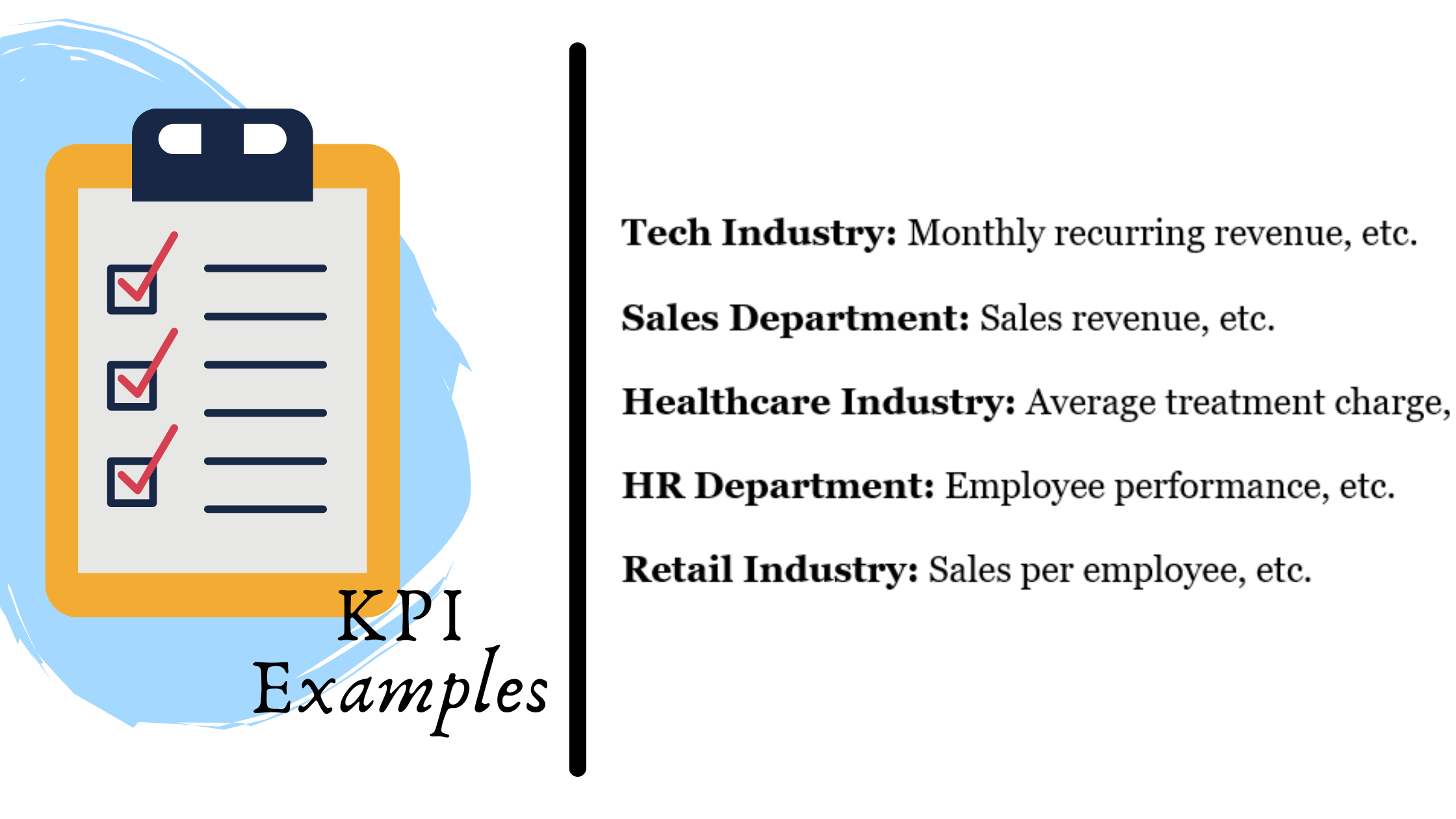OKR vs. KPI: How They Differ and Why You Need Them Both?
In this article, we will talk about OKRs, KPIs, why they are different but why you ultimately need both of them for a successfully planned year with objectives and performance indicators.

2021 is coming to an end, and can I just say what every one of us thinks? Thank God!
With 4 months left in the year to end, don't you think it is best to check on those targets you set at the start of this year? Did you meet them? What did you find difficult? Did you check your progress?
Go back to your goals for particular teams in your organization or even individuals. Did they make enough effort to get where they want to reach? Did you get the result you were aiming for? Which ones of your initiatives were effective? Which ones were useless?
Setting goals can be easy, but going back and reviewing your performance can be a little difficult, especially if you didn't set any performance indicators or objective results at the start of the year.
However, as important it is to review your performance and get on with different plans to reach your goals, it is also important to look and think forward.
OKRs and KPIs are two of the most commonly used terms for goal settings and effective planning. But there are also good enough chances that you might not have heard about them at all. That's alright!
At the end of the day, all of them are tech jargons to set up a basis to move forward, set up a plan, and easily review performance when looking back!
In this article, we will talk about OKRs, KPIs, why they are different but why you ultimately need both of them for a successfully planned year with objectives and performance indicators.
Key Takeaways
- OKR is about creating sustainable long-term changes in a firm.
- KPIs measure the success of an ongoing process of activity (preferably quantitatively).
- OKR is outcome-driven, whereas KPI is value-driven.
- OKR gives the firm a direction, while KPI ensures the right steps are taken towards that direction.
- KPI objectives are more attainable than OKR objectives because of the smaller structure of its framework.
- OKR is set for a period of 1-3 years; KPI goals are set for 2-4 years. (Approx.)
- Despite their differences, the harmonious functioning of both OKRs and KPIs is essential for the firm to meet its short-term and long-term goals.
Table of Content(s)
- What is OKR?
- How To Set OKR Objectives?
- OKR Examples
- What is KPI?
- How To Set KPI Goals?
- KPI Examples
- OKR vs. KPI: What is the Difference?
- OKRs vs. KPIs: Understand the Difference with an Example
- Why Do You Need both KPIs and OKRs for Success?
- Conclusion
What is OKR?

OKR stands for Objectives and Key Results. Specifically, an objective tied to key results.
OKR is a strategic framework where you can set objectives/targets quarterly or annually, measured based on different metrics. The completion of the set objectives would mean the success of the OKR strategy.
The objectives met are directly proportional to the key results achieved. In other words, it is the outcome-driven measurement of work.
OKR is a black and white kind of approach that uses specific metrics to track its goals. Usually, an organization is expected to have 3-5 key results for every objective and 3-5 high-level objectives. No matter what, OKRs are always:
- Ambitious
- Able to objectively score on a scale, be it 0-1 or 0-100
- Quantifiable
- On a set timeline
For example: Let’s assume a firm wants to recruit 100 new members within three months. Here, the recruitment of new members becomes the objective of the firm and the number of members recruited within the period becomes the key result.
Popular businesses that commonly use OKR are Google, Spotify, Linked In, Twitter, and many more.
Related: Check out this OKR tracking Template to manage and track your organization’s OKRs.
How To Set OKR Objectives?
- Set ambitious but few objectives: The OKR objectives, at first look, may seem overwhelming, but they are not impossible to achieve. However, it is more practical to set fewer but more aggressive ambitions with your OKRs. Setting these objectives might cause the employees to overwork and relatively decrease the quality of output.
- Make sure your objectives are measurable: The OKR objectives demand to be measurable, or you wouldn't know when the objective has been met. For example, if one OKR objective of your firm is to hire new employees, then it should decide the number of employees to be hired, or else the objective would remain unmet till it ceases to exist.
- Prioritize your objectives: If the priorities of the objectives are not set, then the firm is bound to encounter chaos and deal with tons of incomplete objectives. Check again; this could be why you are failing to meet your OKR objectives despite being reasonable.
- Communicate the set objectives properly: Another key is to communicate these objectives to your employees with clarity and preferably in a waterfall manner of responsibility. This way, the involvement of the entire working team is ensured while each worker feels like their input has made a difference.
- Subdivide your goals and carry on during outstretches: The OKR objectives can be demanding and surpass the estimated completion period. During such times, one method to simplify the attainment of these goals is to divide them into smaller milestones. This may not shorten the duration of your toil, but it creates the illusion of a more achievable objective.
It is important to do this so that you, along with your co-workers, do not feel burdened or stressed if the attainment of one objective takes you longer than expected. Not to mention the celebration of these minor achievements encourages you to work harder.
If you find it difficult to understand where to start, you can always use a template to ease things out for you. Set goals, and track all your key objectives with Stackby’s template.
OKR Examples

OKRs are set with the vision of the bigger picture or more long-term goals and targets. They are set to push the employees and organizations forward to the line of 'almost impossible to attain' goals. Some examples are:
Organization 1
Objective: To become the market leader in our industry.
- 1st Key Result: Achieve $150 million in revenue.
- 2nd Key Result: Increase the market cap to be able to enter S&P 500
- 3rd Key Result: To increase the staff by 40%
Organization 2
Objective: To increase revenue by 50%
- 1st Key Result: Increase leads generation by 25%
- 2nd Key Result: Acquiring 50 new customers
- 3rd Key Result: Increasing customer retention to 80%
What is KPI?

KPI is an acronym for Key Performance Indicators. While OKR is a strategic framework, KPIs are the units of measurement which exist within that framework.
KPI is more concerned with the result or outcome and the methods with how it was achieved. In simplistic terms, it measures the performance inside any other framework. The measurement of the activity is directly proportional to the actions performed. In other words, it is the value-driven measurement of work.
While everything might look a little vague, it would do well for you to remember that KPIs must always:
- Measured against the targets
- Direct where to focus the resources
- Link to strategic objectives
It is also highly recommended to make your KPIs measurable and to add quantitative values. This makes it easier to compare performance & provide context for whatever you are measuring. Even though it is possible to use qualitative KPIs, it is not highly recommended as it can lead to subjective interpretation and confusion.
For example: When the firm has achieved its OKR of hiring 100 new members within three months, the number of experienced employees hired by a firm within their recruitment period is the measurement of the work quality and quantity of a firm. Hence, becoming a KPI.
The monitoring of Return on investment, average revenue per user, sales target percentage, etc., are all examples of KPIs commonly used throughout popular businesses. It’s obvious that these are an integral part of project assessment, hence implying how KPIs are important for measuring any progress or backlog.
How To Set KPI Goals?
- Set a clear-cut objective: For any success to be met, a goal needs to be set. Without a clear-cut objective, the business may be confused in the middle of a project without tracking progress or a goal to be worked towards.
- Check the measurability of your KPIs: This is a common mistake that people make while setting up their KPIs. Your goals need to be measurable for any changes to be bright when necessary. Not to mention this improves your workflow since you are more likely to target and eradicate your blunders.
- Check the attainability of your objectives: KPIs cannot be randomly set; it has to match the OKR flow of the firm, the average working styles of the employees, and the companies' projects at hand. These factors decide whether your KPI objectives are attainable or not.
- Communicate your KPI objectives to the people of concern: The people in the projects need to know about the set KPI goals. The project owners or the team can’t work towards a certain goal without knowing about it.
- Regularly check the status of your KPIs: The issues arising on the way to attain a project goal cannot be known unless the goals are regularly updated to fit the projects and direction of the firm. You need to check the progress of your objectives for the KPI strategy to be a success.
KPI Examples

KPIs have, say, almost unlimited examples across all the industries. Some of the most common examples are:
- Tech Industry: Monthly recurring revenue, Ticket Resolution time, Customer retention or churn, etc.
- Sales Department: Customer lifetime value, calls made, sales revenue, etc.
- Healthcare Industry: Avg treatment charge, patient wait time, Number of educational programs, etc.
- HR Department: Employee performance, attrition rate, avg. recruitment time, etc.
- Retail Industry: Same-store sales, revenue per square foot, sales per employee, etc.
OKR vs. KPI: What is the Difference?
Comparing OKRs to KPIs is like comparing apples to oranges.
They are on the same side but have different functions. Speaking in general terms, OKRs are more beneficial or well-suited for organizations aggressively focused on growth.
As mentioned above, OKR is a strategic framework, and KPIs are the measuring units of that framework. This is the basic difference between both of them.
The OKR framework is simplistic and based on tracking data, but KPI is most times a single data point. So, there might be times when they overlap. So, we have made an objective list of differences between both:
Goal Aggressiveness
A major distinguishing factor is that the OKR goals are more aggressive as compared to KPI goals. The objectives set through OKR tend to be comparatively far-sighted than KPIs and naturally have a larger amount of employee involvement than KPI goals.
Attainability
The KPI goals are more easily attainable than OKR since they are project-based and often deal with projects with similar frameworks. This is also because the OKR goals are more flexible and experimental as compared to KPI goals.
Measurability
The countability of progression in the attainment of the firm’s goals allows them to track their progress and performance over a long period with ease. OKR is always measurable in this context, although the metric (percentage, decimals, hours, etc.) may vary in every scenario.
While KPI may or may not exist without a metric of measurement, but since KPI depends on the quantitative evaluation of the goals, keeping it metrically measurable is more preferable. Experienced businessmen know to classify their KPIs further into subdivisions as this produces better results.
Framework & Structure
When it comes to measuring the business's objectivity, it can be said that the framework is much wider when it comes to OKR. In contrast, the KPI directly measures the progress made in attaining the goals within that framework.
Timelines
A company’s OKR gives the direction to where the company is headed in the next few years. Therefore, it usually spans from one to three years (used in the long term).
Whereas KPI deals more with the strategy of a project; thus, although some methods may carry over, the same strategies are molded to fit into a new project. The maintenance of these strategies may last for about four to five years, after which it often requires evolution (can be used in the short term).
The division of the goals of the firm and their appropriate allotment to suitable cases is simplified by comparing the advantages and disadvantages of the use of OKR and KPI.
OKRs vs. KPIs: Understand the Difference with an Example
Let’s consider OKRs and KPIs as metaphors. Think of your organization as a car, and you are driving your car towards your destination, i.e., your end goal/objective.
Here, your KPIs will be what you look at on your fuel dashboards, like engine temperature gauge or fuel gauge. These help you to prevent your engine from overheating or running out of fuel, which are the things you need to watch constantly.
OKRs are more like your roadmap – guiding you towards your destination. OKRs are also temporary; they will change according to your destination. Once you have reached one landmark on your destination (key-result), you can focus on the next one to reach your destination.
Any organization which is results-focused needs both OKRs and KPIs. If you are only watching & tracking KPIs, you will not be certain if you are on the right path or making any progress towards your destination. But, if you are only tracking OKRs, you will never know when you might run out of fuel.
So, you need them both for your car to function well and reach your destination.
Why Do You Need both KPIs and OKRs for Success?
As mentioned above, comparing OKRs and KPIs is like comparing apples to oranges because OKRs and KPIs complement each other like natural companions. It is in any firm's interest to track both of them side-by-side.
On the one hand, KPIs help to monitor performance along with identifying issues & scopes for improvement. While, on the other hand, OKRs help solve problems, improve the overall process, and drive innovation. To achieve your goals, you need both.
Hence, tracking them alongside will help you look at the bigger picture all the time and help you keep an eye on all the functioning parts in front of your organization to deliver the results.
Conclusion
Although the factors controlling the setting and execution of OKR and KPI are different, they serve the same basic purpose, i.e., to help the firm meet its objectives and produce better output. The harmonious functioning of the OKR and KPI is beneficial in producing valuable results for the firm. If you want to track your OKR and KPIs and want to get started now, sign up with Stackby and use our pre-built templates!

![Best 14 HR Database Software for Recruitment Agency [Free+Paid] [2025]](/blog/content/images/size/w960/2024/04/stackby--hr-database-software-blog-post-5.3.jpg)
![A Simple Guide on Workflow Management Software [Updated 2025]](/blog/content/images/size/w960/2021/12/work-management-blog.png)

